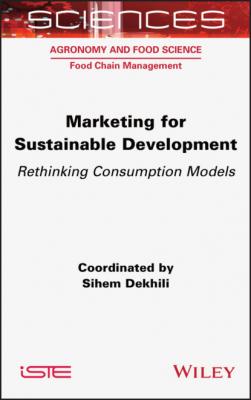Marketing for Sustainable Development. Группа авторов
Читать онлайн.| Название | Marketing for Sustainable Development |
|---|---|
| Автор произведения | Группа авторов |
| Жанр | Маркетинг, PR, реклама |
| Серия | |
| Издательство | Маркетинг, PR, реклама |
| Год выпуска | 0 |
| isbn | 9781119882169 |
Table of Contents
1 Cover
4 Foreword
7 1 Opposing the Market Through Responsible Consumption to Transform It 1.1. Introduction 1.2. Corporate adjustment strategies in response to the contestation of market logic 1.3. Ideological and institutional categories of expressions of contestation 1.4. Pragmatic and operational categories of market contestation 1.5. Conclusion and implications 1.6. References
8 2 Luxury and Sustainable Development: Companies and the Challenge of Overcoming Consumer Reluctance 2.1. Introduction 2.2. The commitment of the luxury sector to sustainability: an unavoidable but risky strategic choice! 2.3. The perceived contradiction between luxury and sustainable development: origins and solutions 2.4. Conclusion 2.5. References
9 3 The Fight Against Food Waste: Approaches and Limits to Consumer-based Actions 3.1. Introduction 3.2. Food chains under tension, food losing value 3.3. Consumer responsibility 3.4. Reducing food waste in mass catering 3.5. Conclusion 3.6. References
10 4 Food Waste in Family Settings: What are the Challenges, Practices and Potential Solutions? 4.1. Introduction 4.2. The actors in family food waste: everyone is involved! 4.3. Multifaceted wastage during family consumption at home 4.4. Conclusion: What about the future? 4.5. References
11 5 The Packaging-free Product Market: A Renewal of Practices 5.1. Introduction 5.2. The characteristics of packaging-free consumption 5.3. Offerings on the packaging-free product market 5.4. Conclusion 5.5. References
12 6 The Conditions for Effective Social Communication 6.1. Introduction 6.2. Social communication: a shifting reality 6.3. How can the credibility of communication be ensured? 6.4. How can CSR provide added value to customers? 6.5. Conclusion 6.6. References
13 7 The Effectiveness of “Provocation” in Environmental Advertising: Beware of “Greenbashing” 7.1. Introduction 7.2. Greenbashing: clarification of a new concept 7.3. The effects of provocation on the effectiveness of environmental advertising 7.4. Conclusion 7.5. References
14 8 How Can We Communicate Effectively About Climate Change? 8.1. Introduction 8.2. A gap between awareness and behavior 8.3. How can we communicate about climate change? 8.4. Mental representations of climate change among children 8.5. Conclusion 8.6. References
15 9 Environmental Regulations and Awareness-raising Campaigns: Promoting Behavioral Change through Government Interventions 9.1. Introduction 9.2. Overview of the environmental intervention tools of public authorities 9.3. Improving the effectiveness of pro-environmental public policies: the contribution of marketing 9.4. Conclusion
